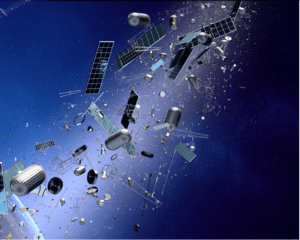By Dr David Finkleman, Col, USAF(Ret) SkySentry, LLC

The recent op-ed is an opinion piece, the opinions of the authors. As principals in these operations, their opinions are different than those who operate satellites.
We will always be able to launch and retrieve satellites. Space is a finite resource only in the sense that our actions establish an equilibrium with a relatively fixed number of satellites. SOCRATES, developed by Sal Alfano confirms that very few objects threaten any satellite with a probability of collision greater than one in ten thousand.
We must avoid describing the near space population with inappropriate analogies. The debris population does not follow a gaussian that can be flattened.
The major cause of debris is launching more and more satellites, whether or not they follow UN guidelines.
It has been said that USSPACECOM detected and identified the recent ASAT before the collision. Launch detection and space surveillance systems require several “hits” to assess trajectories. Processes exist only for objects ascending to orbit and those already in orbit. It is unlikely that any systems revealed where the interceptor was directed or whether it was an ASAT. Perhaps Russia did this in order to find out what we could perceive. Many launch events are exposed a priori, with intelligence capabilities. That seems not to be the case this time.
We must avoid exaggeration and abstraction when discussing these events. There is a difference between opinion and conjecture. That there was a massive cloud of debris that might threaten all satellites is conjecture, not educated opinion. The initial cloud disperses to a thin fog very quickly, since fragments inherit different velocities from the impacts, and the orbits of each are different than the rest.
Unfortunately, almost all Conjunction Data Messages are not actionable. Few recipients use that information other than to initiate further independent investigation. The CNES “Middle Man” scheme is one example. Not once have we detected a real, imminent collision. We know only that there was an event after the fact. The source, cause, or consequences have always been conjectural. NASA maneuvers have always been judgement calls, not necessarily founded in estimates of collisions, because the information uncertainty can be greater than the estimated miss distance. An abundance of caution, not objective direct threat. Recipients use collision assessment from external sources only as an indication that further independent investigation might be required. Few actions are based on these warnings.
Most visualizations of the orbital population are exaggerations. Any depiction that includes the whole Earth amplifies the size of objects in orbit thousands of times. The smaller the Earth is, the greater the magnification. In most, everything that is trackable is about the size of Vermont. It is infeasible to target for a near miss remotely from the ground. Targeting for a deliberate miss is infeasible. Trajectory uncertainties preclude targeting adjustments from the ground. The “end game” requires autonomous, onboard perception of the target and autonomous adjustments to close the distance between the target and the interceptor. Only the interceptor knows where it is relative to the target, as is the case for air to air missiles. It is hard enough to hit a target at all.
These are some of the technical, operational, and presentational deficiencies that must be remedied. Offered in the spirit of collaboration and clarification.

Dr David Finkleman is retired Federal Senior Executive Service, Chief Technical Officer, NORAD and USSPACECOM; Retired Col (USAF), Assistant Chief Technical Officer of the Air Force. MIT PHD Aero/Astro. FELLOW of AIAA, IAF, etc, Former Associate Prof of Aeronautics at USAF Academy. His profile on LinkedIn.
 SpaceWatch.Global An independent perspective on space
SpaceWatch.Global An independent perspective on space




